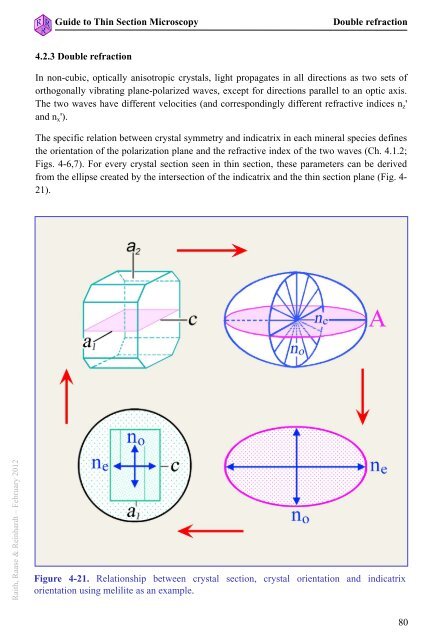guide to thin section microscopy - Mineralogical Society of America
guide to thin section microscopy - Mineralogical Society of America
guide to thin section microscopy - Mineralogical Society of America
You also want an ePaper? Increase the reach of your titles
YUMPU automatically turns print PDFs into web optimized ePapers that Google loves.
Guide <strong>to</strong> Thin Section Microscopy<br />
Double refraction<br />
4.2.3 Double refraction<br />
In non-cubic, optically anisotropic crystals, light propagates in all directions as two sets <strong>of</strong><br />
orthogonally vibrating plane-polarized waves, except for directions parallel <strong>to</strong> an optic axis.<br />
The two waves have different velocities (and correspondingly different refractive indices n z '<br />
and n x ').<br />
The specific relation between crystal symmetry and indicatrix in each mineral species defines<br />
the orientation <strong>of</strong> the polarization plane and the refractive index <strong>of</strong> the two waves (Ch. 4.1.2;<br />
Figs. 4-6,7). For every crystal <strong>section</strong> seen in <strong>thin</strong> <strong>section</strong>, these parameters can be derived<br />
from the ellipse created by the inter<strong>section</strong> <strong>of</strong> the indicatrix and the <strong>thin</strong> <strong>section</strong> plane (Fig. 4-<br />
21).<br />
Raith, Raase & Reinhardt – February 2012<br />
Figure 4-21. Relationship between crystal <strong>section</strong>, crystal orientation and indicatrix<br />
orientation using melilite as an example.<br />
80
















